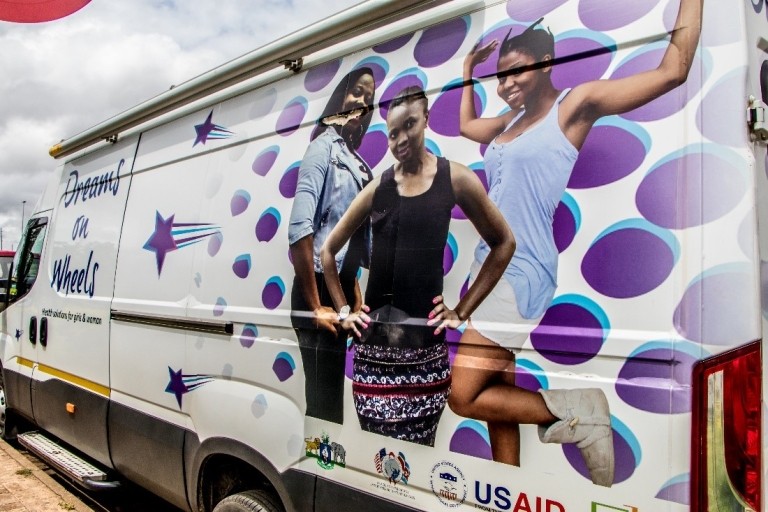Blog
Three ways to reduce HIV infections among adolescent girls and young women in sub-Saharan Africa

Grace Njobvu has experienced the power of DREAMS. At a DREAMS center near her home in Lusaka, Zambia, she accessed counseling to help her deal with depression and trauma after surviving gender-based violence at the hands of a relative. Once hopeless about her future, today, Grace is optimistic and HIV-free. She enjoys helping other young women in Zambia stay healthy, safe and independent.
“I want to be an advocate for young people that went through the mistakes that I did,” she says. “I encourage them to keep coming to DREAMS. It will take us far.”
Across sub-Saharan Africa, adolescent girls and young women (AGYW) like Grace are disproportionally more likely to be HIV-infected compared to their male peers. In 2014, the United States President’s Emergency Plan for AIDS Relief (PEPFAR) launched DREAMS, which provides a package of interventions with proven effectiveness to address factors that make AGYW particularly vulnerable to HIV infection.
As part of our global health programming, Pact has reached over half a million AGYW through DREAMS in six countries: Zambia, Eswatini, South Africa, Tanzania, Rwanda and Namibia.
Here are three key lessons we’ve learned that we hope are useful for others serving AGYW.
1. Bringing integrated services closer to AGYW takes work, but significantly improves service uptake and coverage
Decentralizing services for AGYW has been a cornerstone of DREAMS programming, and success is evident in the programs’ overall reach across all countries where DREAMS is implemented. In Zambia, Pact strategically placed DREAMS centers across communities so biomedical, educational and economic strengthening services are easily accessible. In Eswatini, Pact ran “DREAMS on Wheels,” mobile clinics that brought HIV testing and family planning services directly to AGYW. Both models have required intensive planning, logistics and labor but have resulted in reaching thousands of AGYW who may have not otherwise accessed these high-impact services.

2. AGYW should play an even greater role in DREAMS project design, implementation and monitoring.
DREAMS ambassadors are motivated AGYW selected from the program who are leaders in their communities and raise awareness about DREAMS programming and issues affecting AGYW. In 2021, PEPFAR guided programs to employ this cadre to provide program coordination and oversight, empowering ambassadors to become more actively engaged in DREAMS implementation.
In Eswatini, Pact has taken a step further and placed DREAMS AGYW front and center, holding an “Indaba”—or meeting—with AGYW, DREAMS implementers, USAID and government line ministries, helping to bridge the gaps that too often exists between program designers, service providers, policymakers and the people they serve. Pact Eswatini plans to hold several more Indabas at the regional level this coming year.
3. Covid-19 adaptations resulted in new approaches to reach and engage DREAMS AGYW.
For example, in Tanzania, Pact supported teachers to make regular phone calls to DREAMS girls’ caregivers to monitor the households’ health, education and social interactions. This provided important support during school closures and helped teachers identify issues that the program was able to follow up on.
In Zambia during the first Covid-19 lockdown, AGYW saw a gap in the market and began making cloth face masks as an income-generating activity. Together AGYW across Zambia’s DREAMS centers produced and sold more than 40,000 face masks.
Grace’s story captures what DREAMS is all about. There are hundreds of thousands more stories like hers, lives that have been positively changed because of DREAMS. As these AGYW look to the future, it is important to draw on these lessons to ensure we serve them to the very best of our ability.
To learn more, attend our attend our session next week at the American Public Health Association annual meeting.